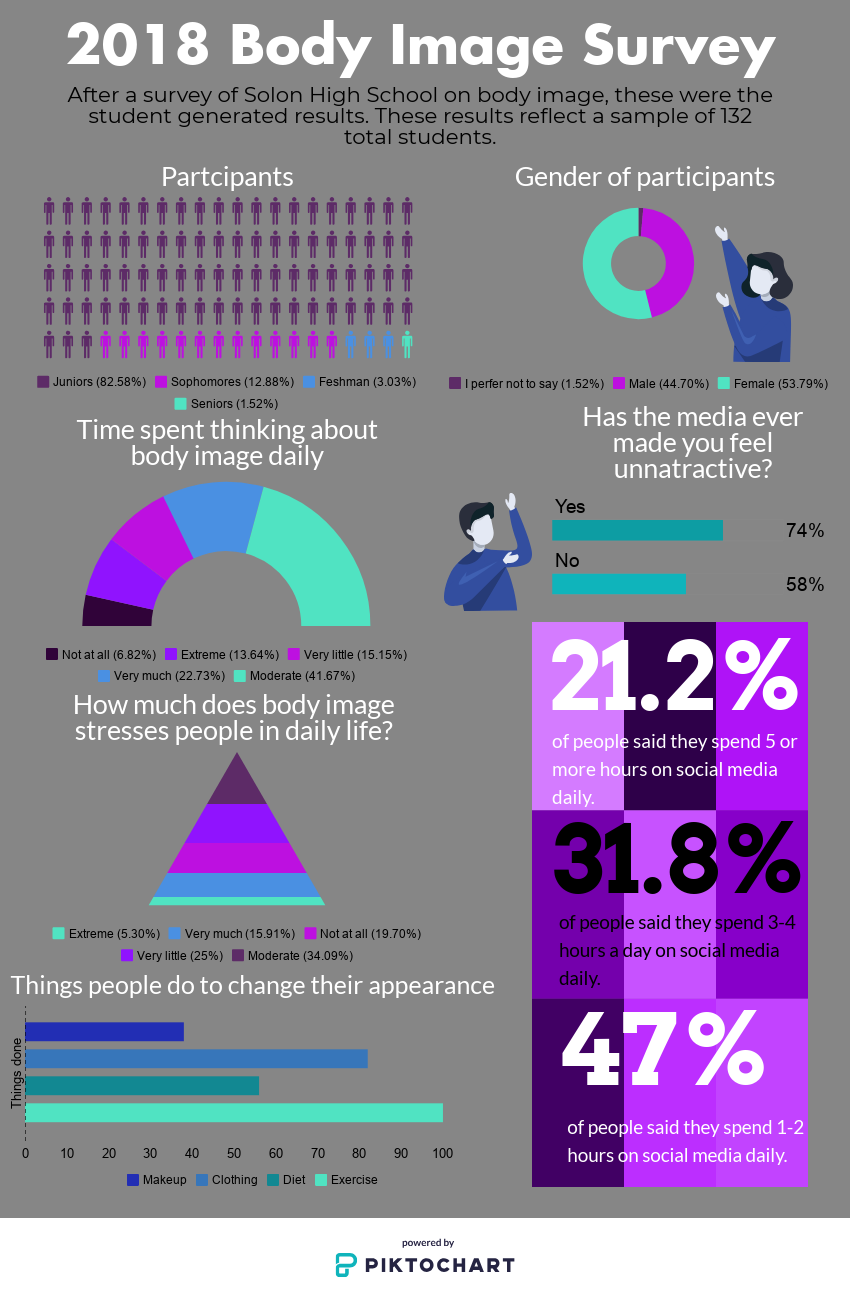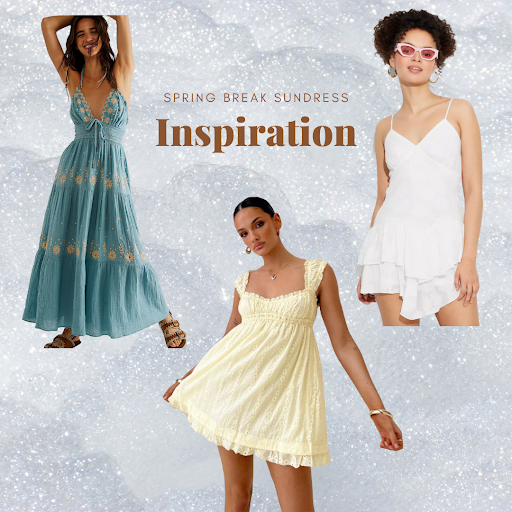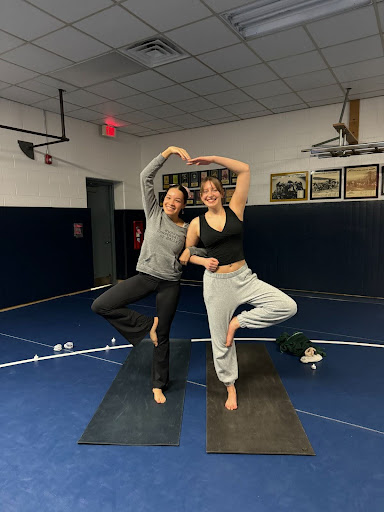Solon High School’s body image needs reimagining
May 31, 2018
Merriam-Webster Medical Dictionary states that body image is “a subjective picture of one’s own physical appearance established both by self-observation and by noting the reactions of others.” That being said, when a body image survey was conducted at Solon High School, it raised several red flags. Starting with how students defined the ideal body.
85 of 132 people surveyed used terms like “skinny” or “fat” in reference to the ideal body, with the latter being what the people wanted to have. 12 of 132 people said “model,” and two of 132 even went as far as to mention exact celebrities (basketball star LeBron James and Instagram model Sommer Ray).
Previously, I didn’t even know who Sommer Ray was, let alone that I should be looking like her, and you know what, nobody else should feel compelled to either.
Another student said that the ideal body should be “absolutely shredded and ripped [with] veins popping out of your arms and everything. 270 lbs of pure and absolute muscle.”
Personally, I can see the sarcastic undertones in this response, as it highlights the more outrageous role media may have on body image, but it is also alarming to hear this because some students truly believe that this description is normal. In order to avoid this response and belief, body image needs to be discussed in a school setting. Health class, an assembly, it truly does not matter as long as the issue is being addressed. A great question to ask: why should our measurements have anything to do with our attitude on life?
In health class, we spent weeks talking about healthy relationships, but shouldn’t our healthiest one be with ourselves?
More students’ responses further prove that body image is something that needs to be looked into. Two students responded that the ideal body image is “not me” and “not mine.” Another student mentioned a “Coke bottle shape.” Just what type of society are we living in that a teenager actually feels their body should look like an inanimate object?
According to school psychologist Jodi Lurie, an ideal body should be a healthy body. Similarly, a student surveyed said “I think having an ‘ideal’ body is when someone [feels] comfortable [in] their own skin and confident as well.”
This would be the response that people would seemingly want to hear, as it is more inclusive, but unfortunately, this was not the popular take. Only five people said something along these lines. Are there really only five people that want everyone to be happy with the way they are?
The survey also showed that students make changes to their appearance through the use of makeup, clothing, exercise, dieting and more.
Guidance counselor Cynthia Russell speculated on why students make such changes.
“Girls think that being thin is ‘in,’ and different body styles trend depending on what is going on, and a lot of that depends on [who] we try to emulate [on TV],” guidance counselor Cynthia Russell said. “That’s why plastic surgeons make so much money, because people will go to any length if they can.”
Why do people feel this urge? Please, point it out to me. Maybe then attitudes can start to be swayed. It could be that they want to emulate celebrities, but I believe it goes deeper than that. Whether we like to admit it or not, there is a stigma around heavier people. How many times have we seen movie adaptations of books in which only thin actors were cast, despite the fact that it is not an accurate depiction of the characters? Sometimes it’s because that actor can embody the spirit of the person, but other times it just seems like lazy casting, and that is something that trickles down to the viewers.
Additionally, when asked whether people believed media played a large role in people’s perception of the ideal body, the answers were telling. 77 people, or 53.8 percent said that time spent on social media will affect one’s body image.
Junior Caleb Kremer shared his thoughts on media’s harmful impact on body image.
“The media influences body image in a negative way on both sides of the spectrum,” Kremer said. “On the female side the ‘ideal body’ is to be skinny with flat toned abs with straightened hair; on the male side the ‘ideal body…’ is to a become a beast, a nice ‘natural’ 8-pack with 14-inch biceps.”
This is coming directly from a student, and being one myself, I can say that the media demands attention and part of that is the desire to be like those in it. Social media, television and advertisements create unnatural depictions of people that force us to recreate our ideals to match what we see, and that’s not right. Why should we all be exactly the same? And more importantly, why should we feel the need to do so?
Noticeably, in the media, Photoshop and filters are constantly utilized in order to get the appearance of an ideal body as Kremer defined it.
Lurie added to this idea with a focus on social media.
“[On social media], People aren’t portraying the pictures they don’t like of themselves…” Lurie said. So when people scroll through that [feed], and innately or consciously [decide] that [these], whether it’s Snapchat or Instagram or whatever, are… reflections of people’s lives, and they’re not, they’re a snap of the perfect moments, it’s really hard to take that in.”
And why is that? Why do people feel the need to change themselves in order to fit in? To be like everyone else? When did “pretty” start to mean “fake?” And why is nobody talking about it?
So why has nobody done anything about it? Maybe it’s because they don’t know, maybe they don’t care, regardless, we can no longer just sit back. The statistics unveiled by the survey demonstrate a deeper problem within the SHS population and it’s time for SHS students, teachers and administration to take initiative.
As I mentioned before, a health class lesson would be great, but not all people take health at SHS. So what can we do that will affect everyone? Maybe an assembly. A schoolwide assembly is a lot to ask, but a Freshman Mentor Program directed at body image is entirely doable. The point is that there is something fundamentally wrong within our community if the youth believes that they need to look like all of the people in the media, and it’s about time we all did something about it.










